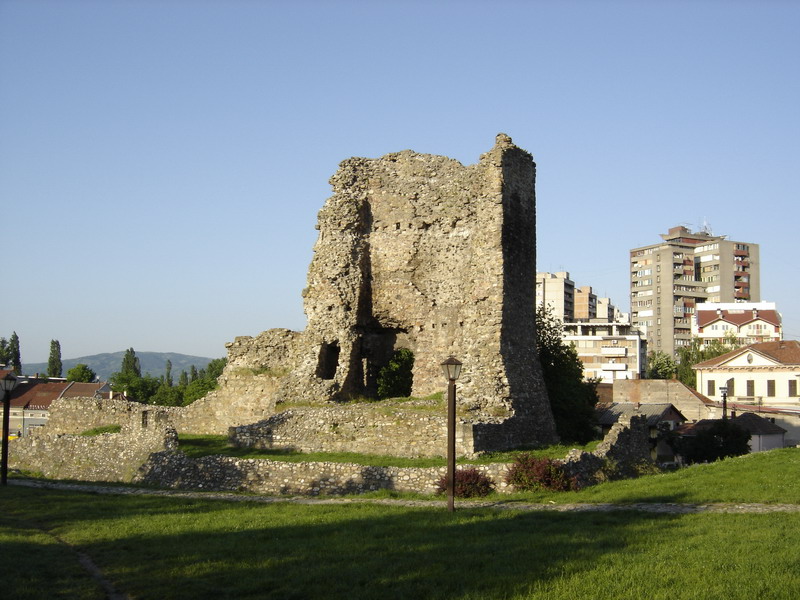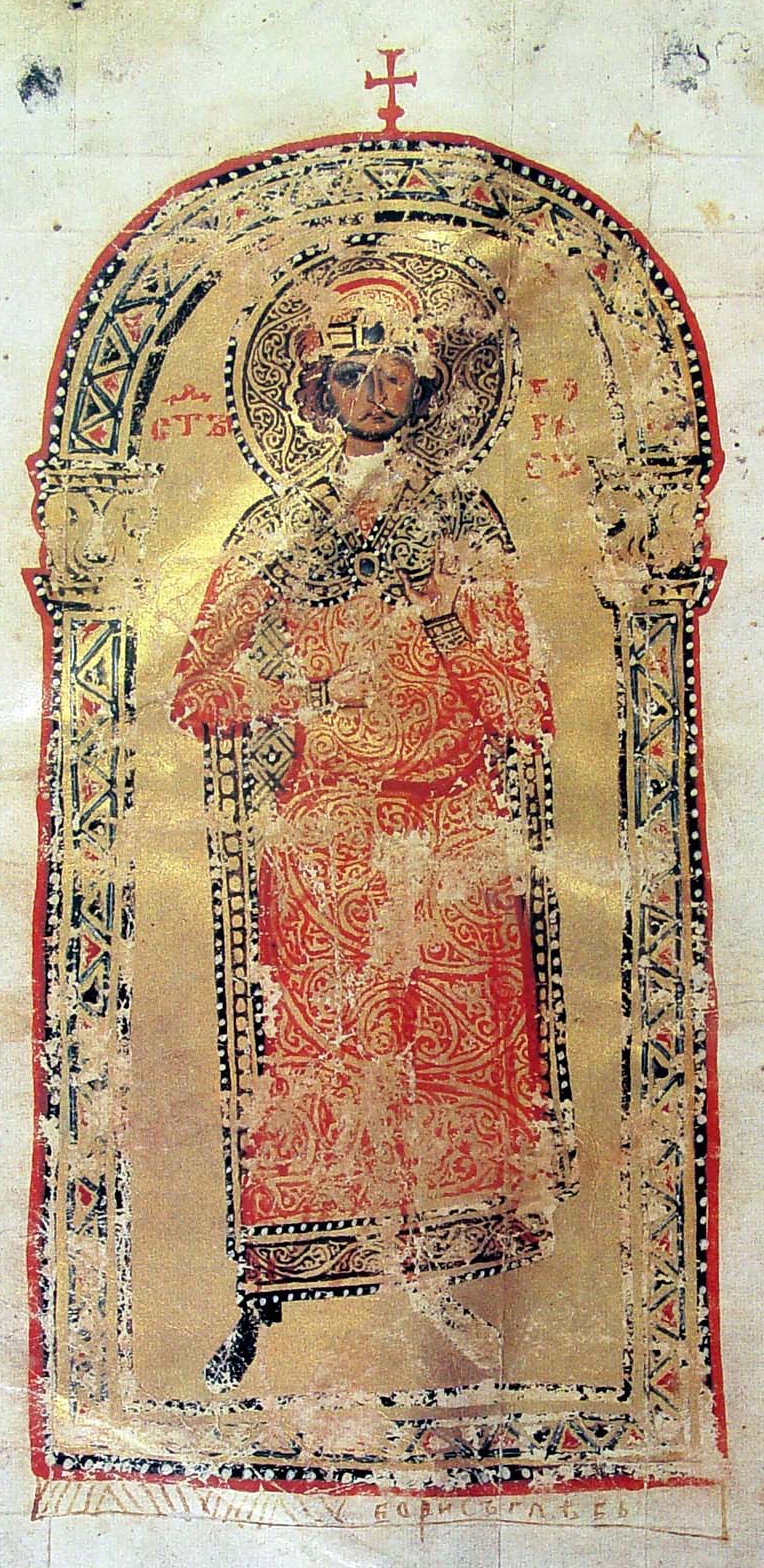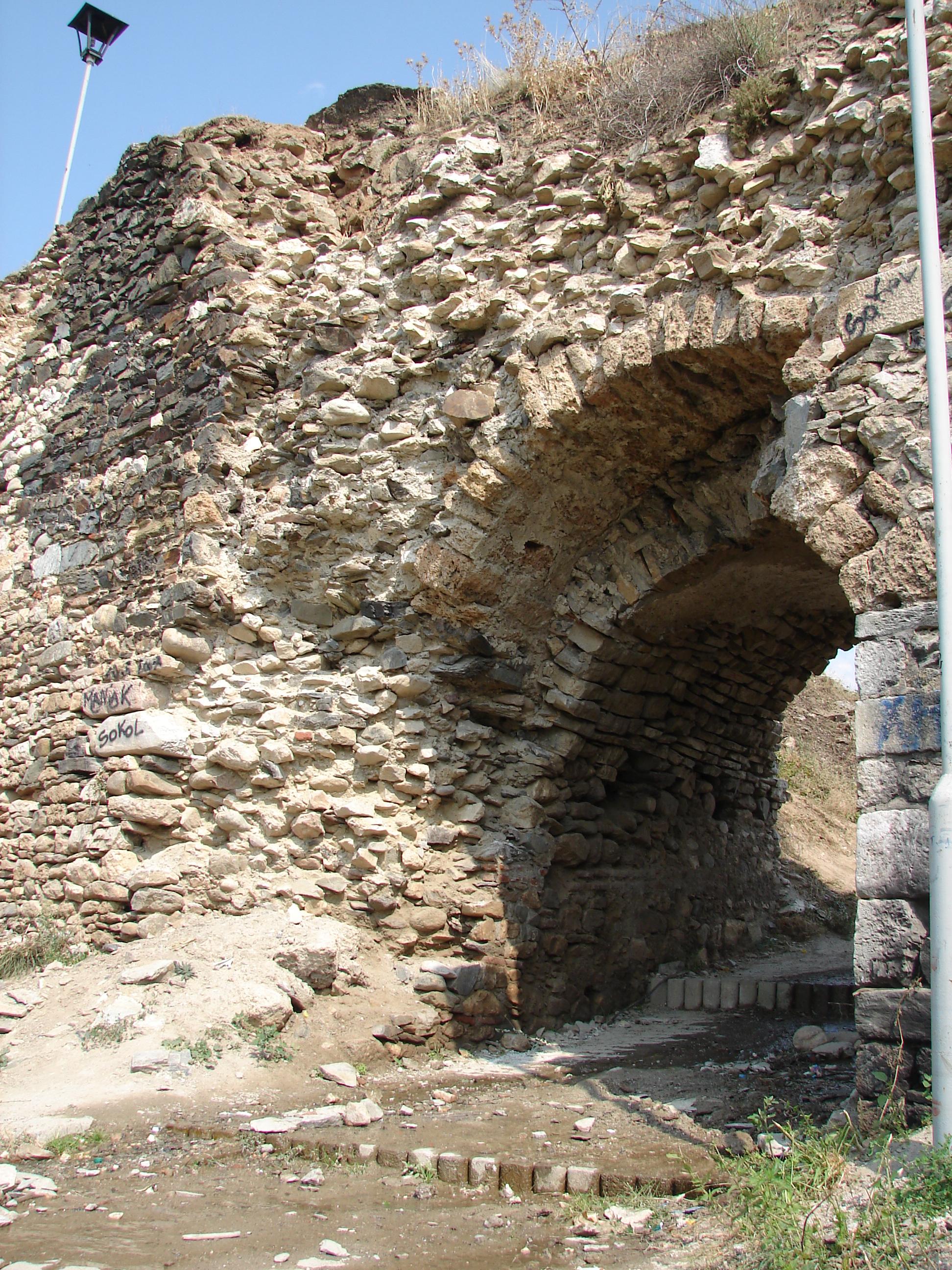|
Lazar Of Serbia
Lazar Hrebeljanović ( sr-Cyrl, Лазар Хребељановић; – 15 June 1389) was a medieval Serbian ruler who created the largest and most powerful state on the territory of the disintegrated Serbian Empire. Lazar's state, referred to by historians as Moravian Serbia, comprised the basins of the Great Morava, West Morava, and South Morava rivers. Lazar ruled Moravian Serbia from 1371 until his death in 1389. He sought to resurrect the Serbian Empire and place himself at its helm, claiming to be the direct successor of the Nemanjić dynasty, which went extinct in 1371 after ruling over Serbia for two centuries. Lazar's programme had the full support of the Serbian Orthodox Church, but the Serbian nobility did not recognize him as their supreme ruler. He is often referred to as Tsar Lazar Hrebeljanović ( / ''Car Lazar Hrebeljanović''); however, he only held the title of prince ( / '' knez''). Lazar was killed at the Battle of Kosovo in June 1389 while leading a ... [...More Info...] [...Related Items...] OR: [Wikipedia] [Google] [Baidu] |
Saint
In Christianity, Christian belief, a saint is a person who is recognized as having an exceptional degree of sanctification in Christianity, holiness, imitation of God, likeness, or closeness to God in Christianity, God. However, the use of the term ''saint'' depends on the context and Christian denomination, denomination. In Anglican Communion, Anglican, Oriental Orthodox, and Lutheranism, Lutheran doctrine, all of their faithful deceased in Heaven are considered to be saints, but a selected few are considered worthy of greater honor or emulation. Official Ecclesiastical polity, ecclesiastical recognition, and veneration, is conferred on some denominational saints through the process of canonization in the Catholic Church or glorification in the Eastern Orthodox Church after their approval. In many Protestant denominations, and following from Pauline usage, ''saint'' refers broadly to any holy Christian, without special recognition or selection. While the English word ''saint'' ... [...More Info...] [...Related Items...] OR: [Wikipedia] [Google] [Baidu] |
Jelena Lazarević
Jelena Lazarević ( sr-cyr, Јелена Лазаревић; 1365/1366 – 1443), also known, by marriages, as Jelena Balšić or Jelena Hranić or Jelena Kosača, was a medieval Serbian princess, daughter of Prince Lazar of Serbia and Princess Milica Nemanjić. She had a very strong personality and significantly influenced the way her husbands, first Đurađ II Balšić and second Sandalj Hranić Kosača, and her son Balša III governed their realms. Jelena encouraged them to resist Venetian encroachment on territory belonging to Zeta, the medieval Serbian state ruled by Đurađ II and, upon his death, by Balša III. She is also known as a writer in epistolary literature, particularly her correspondence with Nikon of Jerusalem, a monk in the Gorica Monastery on Lake Skadar (Montenegro). Her three epistles are part of the ''Gorički zbornik'', a medieval manuscript collection. Name Jelena's nickname was "Lady Lena" (Госпођа Лена) or the "Learned one" (Уч ... [...More Info...] [...Related Items...] OR: [Wikipedia] [Google] [Baidu] |
Battle Of Kosovo
The Battle of Kosovo took place on 15 June 1389 between an army led by the Serbian Prince Lazar Hrebeljanović and an invading army of the Ottoman Empire under the command of Sultan Murad I. It was one of the largest battles of the Late Middle Ages. The battle was fought on the Kosovo field in the territory ruled by Serbian nobleman Vuk Branković, in what is today Kosovo, about northwest of the modern city of Pristina. The army under Prince Lazar consisted mostly of his own troops, a contingent led by Branković, and a contingent sent from Bosnia by King Tvrtko I, commanded by Vlatko Vuković. Additionally, Lazar was also supported by a Christian coalition from various European ethnic groups. Prince Lazar was the ruler of Moravian Serbia and the most powerful among the Serbian regional lords of the time, while Branković ruled the District of Branković and other areas, recognizing Lazar as his overlord. Reliable historical accounts of the battle are scarce. The bulk of ... [...More Info...] [...Related Items...] OR: [Wikipedia] [Google] [Baidu] |
Knez (title)
A , also , ''knjaz'' or (), is a historical Slavic title, used both as a royal and noble title in different times. It is usually translated into English as 'prince', 'king' or 'duke', depending on specific historical context and the potentially known Latin equivalents at the time; the word was originally derived from the common Germanic ('king'). Feminine forms of the word may be divided into two groups: * "Princess", be it princess consort (wife of a reigning prince), princess regnant (reigning princess ''suo jure''), or princess regent (reigning on behalf of an underage prince, usually her son after her husband's death) ** Belarusian: ''kniahinia'' (княгіня) ** Bulgarian and Russian: () ** Slovene, Serbo-Croatian, and Macedonian: (in Serbian and Macedonian Cyrillic: ) ** Ukrainian: (княгиня) * "Daughter of the prince" ** Belarusian: ''kniazioŭna'' (князёўна) ** Russian: (; the son of a ''knyaz'' is ' ( in its old form). ** Ukrain ... [...More Info...] [...Related Items...] OR: [Wikipedia] [Google] [Baidu] |
Prince
A prince is a male ruler (ranked below a king, grand prince, and grand duke) or a male member of a monarch's or former monarch's family. ''Prince'' is also a title of nobility (often highest), often hereditary, in some European states. The female equivalent is a princess. The English word derives, via the French word ''prince'', from the Latin noun , from (first) and (head), meaning "the first, foremost, the chief, most distinguished, noble ruler, prince". In a related sense, now not commonly used, all more or less sovereign rulers over a state, including kings, were "princes" in the language of international politics. They normally had another title, for example king or duke. Many of these were Princes of the Holy Roman Empire. Historical background The Latin word (older Latin *prīsmo-kaps, ), became the usual title of the informal leader of the Roman senate some centuries before the transition to empire, the '' princeps senatus''. Emperor Augustus establishe ... [...More Info...] [...Related Items...] OR: [Wikipedia] [Google] [Baidu] |
Serbian Orthodox Church
The Serbian Orthodox Church ( sr-Cyrl-Latn, Српска православна црква, Srpska pravoslavna crkva) is one of the autocephalous (ecclesiastically independent) Eastern Orthodoxy, Eastern Orthodox Eastern Orthodox Church#Constituencies, Christian churches. The majority of the population in Serbia, Montenegro and Republika Srpska of Bosnia and Herzegovina are Baptism, baptised members of the Serbian Orthodox Church. It is organized into metropolis (religious jurisdiction), metropolitanates and eparchies, located primarily in Serbia, Bosnia and Herzegovina, Montenegro, and Croatia. Other congregations are located in the Serb diaspora. The Serbian Patriarch serves as first among equals in his church. The current patriarch is Porfirije, Serbian Patriarch, Porfirije, enthroned on 19 February 2021. The Church achieved Autocephaly, autocephalous status in 1219, under the leadership of Saint Sava, becoming the independent Archbishopric of Žiča. Its status was elevated ... [...More Info...] [...Related Items...] OR: [Wikipedia] [Google] [Baidu] |
Nemanjić Dynasty
The House of Nemanjić ( sr-Cyrl, Немањић, Немањићи; Nemanjić, Nemanjići, ) was the most prominent Serbian dynasty of Serbia in the Middle Ages. This princely, royal and imperial house produced List of Serbian monarchs, twelve Serbian monarchs, who ruled between 1166 and 1371. Its progenitor was Stefan Nemanja, scion of a cadet branch of the Vukanović dynasty (1101–1166). After Nemanja, all monarchs used ''Stefan (title), Stefan'' as a personal name, or a ruler's name, a tradition adopted for the royal pretensions. The monarchs began as Grand Princes, and with the crowning of Stefan the First-Crowned, Stefan Nemanjić in 1217, the realm was promoted to a Kingdom, and the Serbian Orthodox Church was established in 1219. In 1346, Stefan Dušan was crowned ''Emperor of the Serbs and Greeks'', and the Archbishopric of Serbia was elevated to a Serbian Patriarchate of Peć, Patriarchate. The dynasty's rule in Serbia ended in 1371, with the death of childless Ste ... [...More Info...] [...Related Items...] OR: [Wikipedia] [Google] [Baidu] |
South Morava
The South Morava (; Macedonian and Serbian: Јужна Морава, ''Južna Morava'', ) is a river in eastern Kosovo and in southern Serbia, which represents the shorter headwater of Great Morava. Today, it is long, including its source river Binačka Morava. It flows generally in the south to north direction, from the Macedonian border to Kosovo and onwards to Central Serbia, where it meets West Morava at Stalać, to create Great Morava. Sources The river rises in the Skopska Crna Gora mountain north of Skopje, in North Macedonia. The streams Ključevska reka and Slatinska reka join to form the river Golema, which is, after passing the Macedonian-Serbian border, known as the Binačka Morava. After 49 km it meets the Moravica (further upstream called Preševska Moravica) at Bujanovac, and for the remainder, 246 km, flows as the South Morava. Geography The South Morava belongs to the Black Sea drainage basin, and its own drainage area is 15,696 k ... [...More Info...] [...Related Items...] OR: [Wikipedia] [Google] [Baidu] |
West Morava
West Morava (, ) is a river in Central Serbia, a 184-km long headstream of the Great Morava, which it forms with the South Morava. It was known as Brongus in antiquity. Origin The West Morava originates in the Tašti field, east of the town of Požega, from the Golijska Moravica and Đetinja headstreams. Đetinja receives from the left its main tributary, the Skrapež. Less than a kilometer after the confluence, it meets the Golijska Moravica flowing from the south, forming the West Morava. Given the proximity of the confluences of Đetinja, Skrapež and Golijska Moravica, some sources consider all three rivers to be direct headstreams of the West Morava River. Following the direction of the course, the Đetinja is a natural headstream of the West Morava. But since Golijska Moravica is 23 km longer, the latter is considered as the main headstream. Measured from the source of the Golijska Moravica, the West Morava is 282 km long; the length of the West Morava proper ... [...More Info...] [...Related Items...] OR: [Wikipedia] [Google] [Baidu] |
Great Morava
The Great Morava (, ) is the final section of the Morava ( sr-Cyrl, Морава), a major river system in Serbia. Etymology According to Predrag Komatina from the Institute for Byzantine Studies in Belgrade, the Great Morava is named after the Merehani, an early Slavic tribe who were still unconquered by the Bulgars during the time of the Bavarian Geographer. However, after 845, the Bulgars added these Slavs to their ''societas'' (they are last mentioned in 853). Length The Great Morava begins at the confluence of the South Morava and the West Morava, located near the village of Stalać, a major railway junction in Central Serbia. From there to its confluence with the Danube northeast of the city of Smederevo, the Velika Morava is 185 km long. With its longer branch, the West Morava, it is 493 km long. The South Morava, which represents the natural headwaters of the Morava, used to be longer than the West Morava, but due to the regulations of river bed and ... [...More Info...] [...Related Items...] OR: [Wikipedia] [Google] [Baidu] |
Moravian Serbia
Moravian Serbia (), the Principality of Moravian Serbia () or the Realm of Prince Lazar was the largest and most powerful Serbian principality to emerge from the ruins of the Serbian Empire (1371). Moravian Serbia was named after Morava, the main river of the region. The independent principality in the region of Morava was established in 1371, and attained its largest extent in 1379 through the military and political activities of its first ruler, prince Lazar Hrebeljanović. In 1402 it was raised to the Serbian Despotate, which would exist until 1459. History Lazar Hrebeljanović was born in around 1329 in the fortress of Prilepac, near the town of Novo Brdo in the region of Kosovo, Kingdom of Serbia. Lazar was a courtier at the court of Serbian Tsar Stefan Uroš Dušan, and at the court of Dušan's successor, Tsar Stefan Uroš V (r. 1356–1371). Uroš's reign was characterized by the weakening of the central authority and the gradual disintegration of the Serbian Empir ... [...More Info...] [...Related Items...] OR: [Wikipedia] [Google] [Baidu] |
Serbian Empire
The Serbian Empire ( sr-Cyrl-Latn, Српско царство, Srpsko carstvo, separator=" / ", ) was a medieval Serbian state that emerged from the Kingdom of Serbia. It was established in 1346 by Dušan the Mighty, who significantly expanded the state. During Dušan's rule, Serbia was one of the most powerful European states and, the most powerful in Southeast Europe. It was an Eastern Orthodox multi-ethnic and multi-lingual empire that stretched from the Danube in the north to the Gulf of Corinth in the south, with its capital in Skopje. Dušan also promoted the Serbian Archbishopric to the Serbian Patriarchate. In the Serbian Empire, the region of Kosovo was the most prosperous and densely populated area, serving as a key political, religious, and cultural center. Dušan's son and successor, Uroš the Weak, struggled to maintain his father's vast empire, gradually losing much of the conquered territory - hence his epithet. The Serbian Empire effectively ended wit ... [...More Info...] [...Related Items...] OR: [Wikipedia] [Google] [Baidu] |







